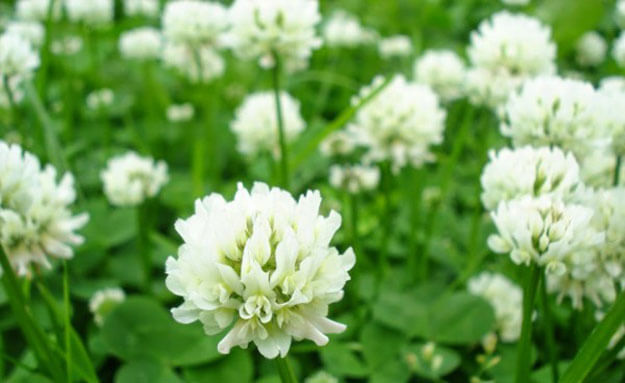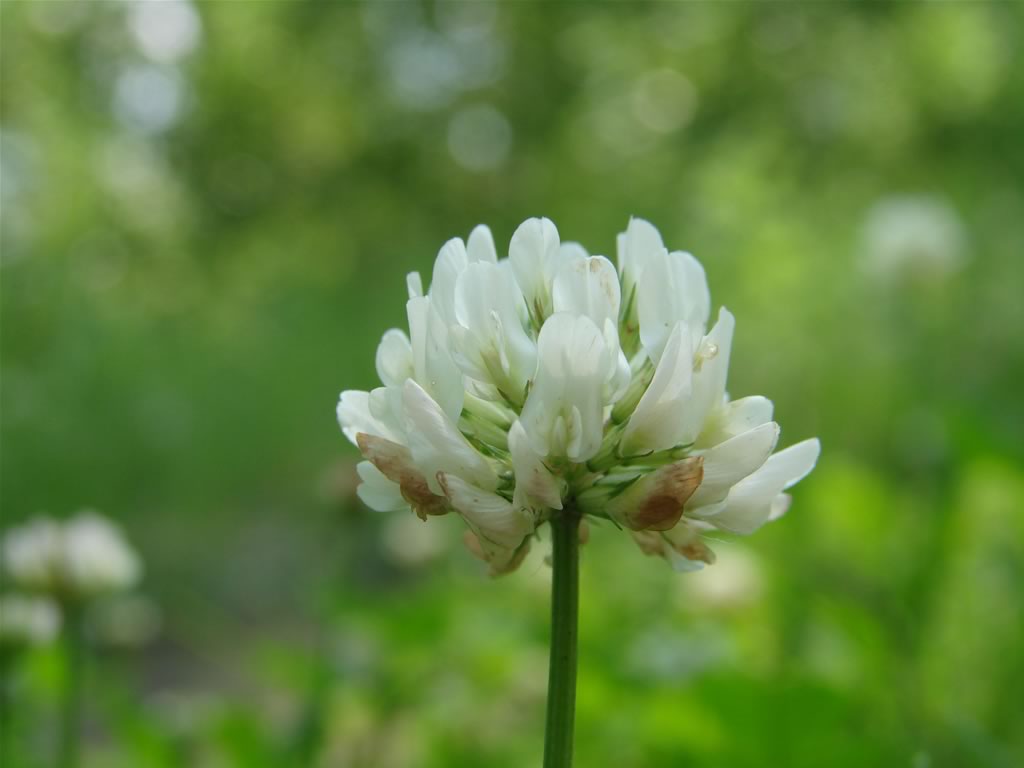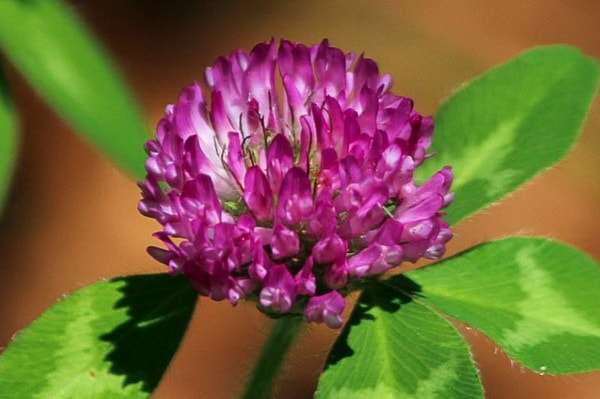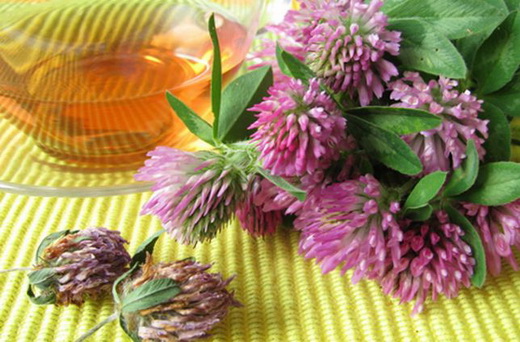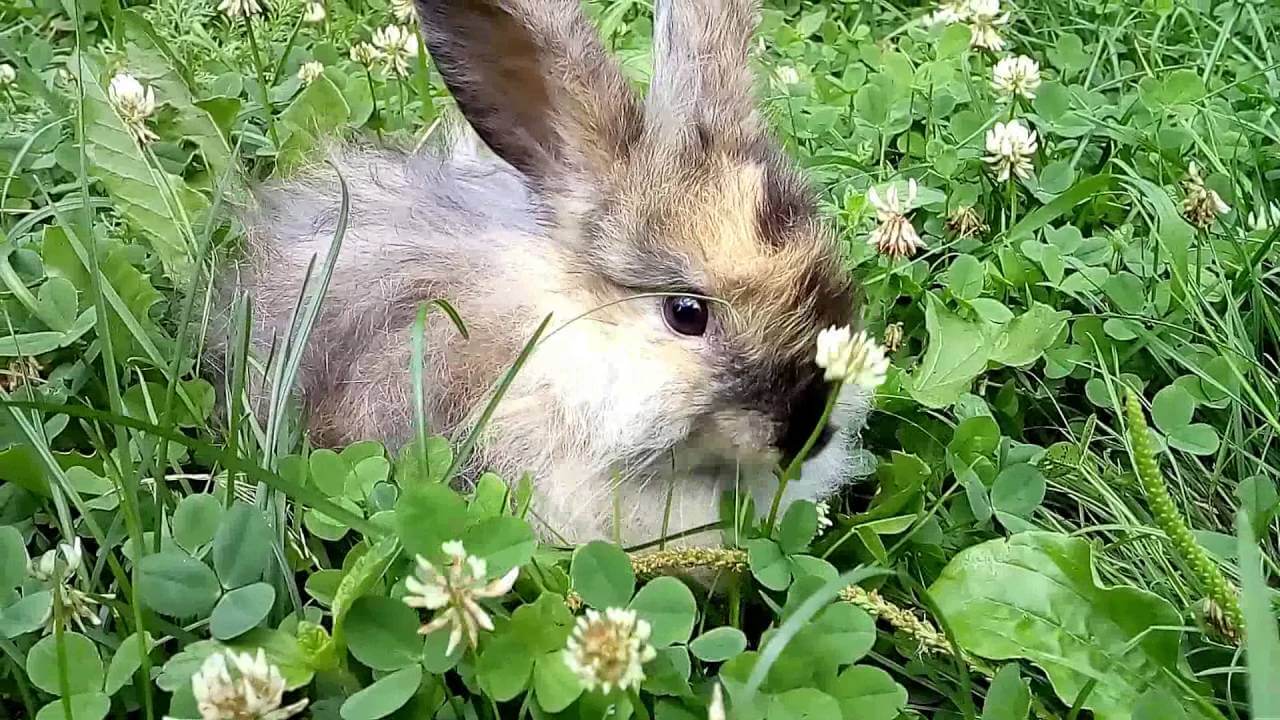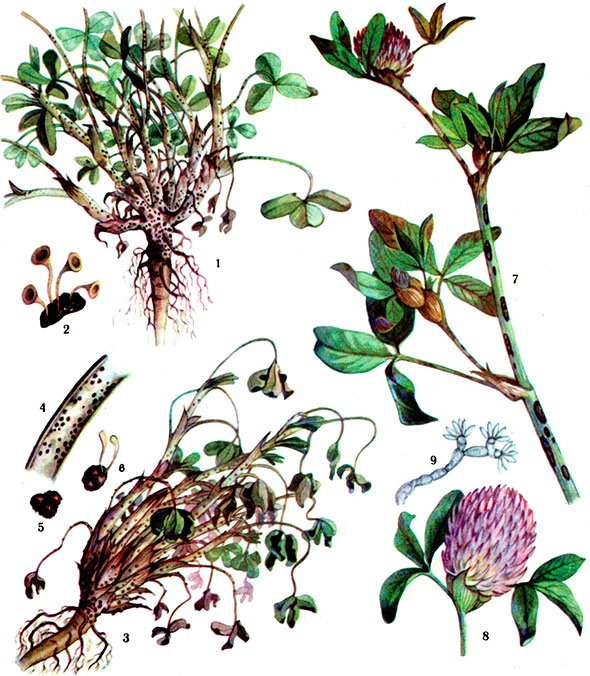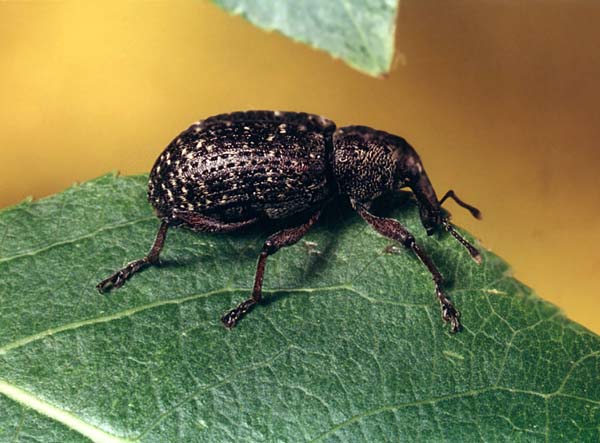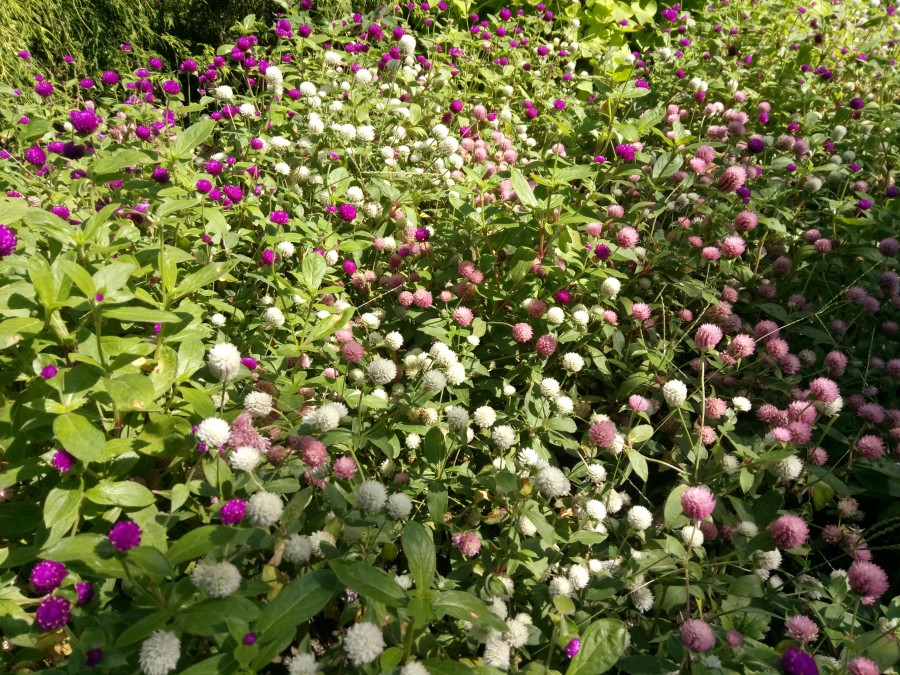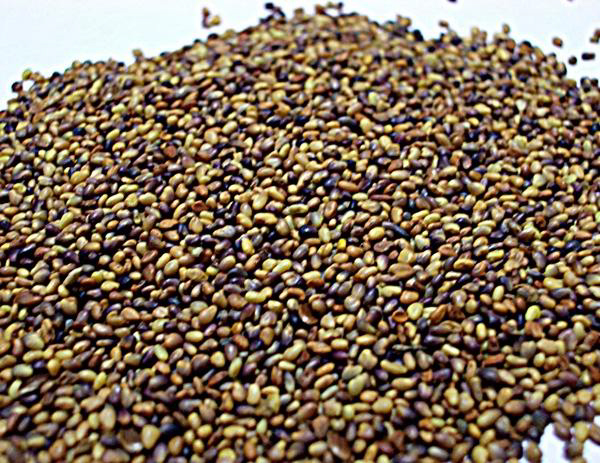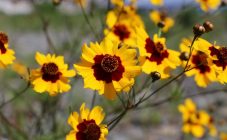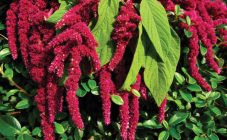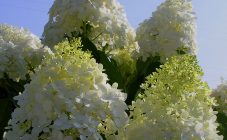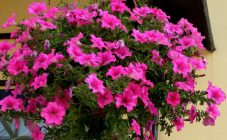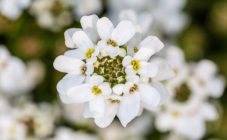Content:
White clover (in other words, creeping clover, and some call it Dutch, white porridge or creeping amoria) is a short plant belonging to the Clover genus, the Moth family and the Legumes family. Translated from Latin, clover means "shamrock".
Description of clover
White creeping clover is a perennial herbaceous crop, it is distinguished by:
- pivotal and branching root system;
- a creeping stem that spreads and takes root in nodes;
- foliage of a long petiolate tripartite type, wide-ovate, with a notched apex and petioles 30 cm long.
Rivendel white clover has axillary flower heads and almost spherical shape. They are loose, and in diameter they can reach 2 cm. The plant has a long peduncle, which exceeds the foliage petiole and can reach 30 cm, and after flowering it bends down. Clover has a corolla of white or pinkish color, but when it fades, it begins to turn brown. Flowers of a plant with a pleasant and sweet aroma. Inside you can count about 10 stamens, 9 of which are spliced into a single tube. At the very bottom of the crown of the plant, nectar is stored, just near the ovary.
The blooming of the bud occurs from the periphery to the central part. The pollen grain of a three-furrowed plant is elliptical. The fruit of a clover is an oblong bean of a flat type. Each contains either a few kidney-shaped nuclei or a heart-shaped seed that is gray-yellow or orange in color. Clover ripens from June to July. Propagated by seeds or vegetatively.
The zone of distribution of the plant is the territory of North Africa, Minor, Western and Central Asia, Pakistan and almost all of Europe. This culture was naturalized in the region of southern Africa, in Asia, in particular, its tropical region, as well as within Australia and New Zealand. White clover is also found in the Russian Federation in the European region, as well as within the Caucasus, Siberia and the Far East. This variety of creeping clover prefers to grow in fields and meadows, as well as close to water bodies, near roads, pastures and housing. You can often see it as a weed in the area of crops, since it has no special requirements for soil. It is moisture and photophilous, resistant to frost. The foliage is arranged in 6 plates, but there are species with a record number of 21.
Types and varieties of clover
How to plant a clover lawn? Initially, you need to understand the types of this grass and the peculiarities of the locations, climatic conditions they prefer, in order to get a positive result from planting clover. All over the world, there are about 300 plant species, but many are interested in what kind of clover in the country they can grow with their own hands. The most common variety in Russia is considered to be meadow, which has been growing for about 200 years, and it was from it that new species were bred. This herb is used as livestock feed. Meadow clover most often grows in meadows and fields, as well as in mountainous areas.
There are several more main plant varieties that are in considerable demand:
- White clover, or creeping. This is a perennial plant with a creeping stem, reaching a length of no more than 40 cm. The foliage is trifoliate and round.This clover is very tenacious and is able to withstand trampling by cattle and even severe frosts. The negative thing is that the plant grows very quickly and literally covers the entire flower bed.
- Clover Atropurpurea has three- and four-lobed leaves with an unusual color. There is magenta in the middle and green at the edges. The variety is photophilous, and in the shade it begins to wither, which can result in the death of the plant.
- Clover Purpurascens has red-brown leaves with a green border around the bottom. It grows very quickly in the flower garden. There are 4 petals in its inflorescence.
- Good Luck clover has 4 leaves and is green or purple at the edges, but the former is more common.
- Pink clover (or Swedish, hybrid) prefers to grow in the Crimea and the Caucasus, as well as in the central Black Earth region. The variety is quite hardy. Sowing is carried out in the spring. It is preferable to grow on pastures as forage, as it is more juicy and useful relative to meadow. Clover is not resistant to acidity in the soil, so it should be sown into the soil where there is constant moisture, for example, not far from water bodies. The plant begins to bloom in June and lasts until autumn. The leaves in the trefoil are ovoid.
- Reddish clover. The first difference from other varieties is that this plant is very beautiful and grows in the form of lush large bushes, the height of which reaches 60 cm. The culture has large elongated crimson-red inflorescences and large three-lobed foliage. This variety is perennial. It is planted by hand in open ground, grown by seeds. Experienced breeders prefer to propagate it by dividing the shrub. This variety is strictly forbidden to mow and cause any harm, since it is listed in the Red Book.
How to plant white clover for your lawn to get a beautiful flower bed? Reproduction takes place through seeds. The division of shrubs is possible, but the benefits of the resulting small shrubs will not be great. For example, if seeds and young growth are sown at the same time, regardless of what kind it is: lawn, meadow or decorative, the first plants will take root, begin to actively grow and develop much faster.
Clover properties
According to ancient folk healers and herbalists, this plant is worthy of respect. They knew about the beneficial properties of clover and used it for good. Namely, this plant contributes to:
- strengthening immunity;
- normalization of the menstrual cycle;
- elimination of inflammation in the female reproductive system;
- reducing the manifestation of PMS symptoms;
- strengthening the walls of blood vessels;
- increasing potency;
- elimination of irritation;
- relieve stress;
- improving blood;
- cough removal.
It would seem a modest plant, but in fact it was very much appreciated hundreds of years ago, especially when faced with:
- an increase in body temperature;
- intrauterine bleeding;
- decreased body tone;
- violation of the outflow of bile;
- bronchitis and colds;
- hormonal problems.
It is the type of white clover that is especially beneficial for health, but only on condition that the use is appropriate. There are contraindications, which include:
- period of pregnancy and lactation;
- period 2 weeks before or after surgery;
- recent stroke;
- oncological formations, especially in the area of the ovaries and uterus;
- protein deficiency.
In case of an overdose or simply with intolerance to clover, symptoms may occur in the form of:
- skin rash;
- painful sensations;
- nausea;
- bleeding in the uterus;
- headache.
Clover is used as a pasture fodder plant, which is readily eaten by any livestock. It is also recognized as an excellent green manure capable of improving soil properties. In the northern part of the European side of the Russian Federation, this culture is considered an important honey plant, since throughout the summer it collects a large amount of nectar and drill pollen-pollen. Clover honey is white.
Diseases and pests
The planting of clover looks very dense, and it is because of this that the soil under it does not have time to dry out, which contributes to the formation of high humidity. This leads to the formation of snails and slugs, and is also the reason why clover is susceptible to fungal diseases. For prevention, a regular haircut is carried out.
In addition to snails and slugs, other insects can harm the plant:
- Alfalfa bug. To overcome this parasite, insecticides are used during the onset of budding. This is important, since at this time the insect lays the larvae, which will also be destroyed.
- Clover weevil. To prevent its appearance, clover seeds are also treated with insecticides.
- Locust. Such pests cause great harm to plants of various crops, especially the Siberian and dark-winged locusts and filly. The method of struggle is the same preventive treatment with insecticides.
From dangerous diseases, clover can be affected by powdery mildew, to prevent which it is necessary to thoroughly clean, sort and store the seeds correctly, and carry out pickling before sowing. Do not forget about feeding in the form of phosphorus and potassium fertilizers.
Planting and caring for clover
The plant is considered unpretentious and resistant to various negative factors, but it has its own characteristics regarding planting:
- a shadow is categorically undesirable for him;
- you need to choose an open and brightly lit place;
- it is extremely important to avoid excessive moisture at the roots of the plant in order to exclude the formation of rot, mold and parasites;
- due to the presence of a dense root system, it is perfectly located on the slopes and strengthens them;
- white shamrock prefers to grow on loamy, neutral and slightly acidic soil, and therefore planting is carried out in a large open area or lawn.
Clover is ideal for an unshaded garden area. It can be placed both as separate "bald spots", and as filling wastelands along fences and structures. As lawn grass, it can be used for children's and sports grounds, but not for a football field. It is also suitable for lawn decoration and as a material for the formation of a Moorish lawn covering. Clover will look gorgeous on a slope, an alpine slide or as an addition to a rose garden.
After the location is selected, the surface of the earth is prepared. Despite the minimum requirements, it is impossible to plant a crop in untreated soil. Accordingly, it is carried out:
- digging up the site;
- loosening of the soil;
- cleaning the soil from weeds and debris with stones.
After that, the prepared flower bed is left for several days to sink. Clover seeds are planted in moist soil and, if the weather is dry, the garden is watered. It is imperative to use potash and phosphorus-type fertilizing. The calculation is as follows - 400 g per 1 hundred square meters.
If the soil is acidic, then it is limed before planting, which will significantly increase frost resistance.
Sowing seeds is carried out when the average air temperature is 10-13 ° C. It is mainly spring - early summer, from April to June.
A layer of earth 1 cm thick is laid on top, after which it is rolled with a roller, but it is permissible to use a bucket, provided that it is completely smooth. Hose irrigation is highly undesirable, but a rain nozzle will allow watering the ground without damaging the integrity of the upper layer. If the recommendations are followed correctly, the first shoots can be seen in 2 weeks. The grass will begin to bloom only 1.5 years after planting. During the summer, the buds open twice.
As for further care, it will not take much effort, it is enough to water, clean up dried foliage and debris. Watering is carried out periodically, but usually the plant has enough natural precipitation. As soon as weeds appear, difficulties can arise as the removal must be done manually.
With proper care and regular mowing, you can achieve a neat, beautiful and lush clover carpet lawn that will delight you with two waves of flowering. To make the lawn brighter and more original, it is worth giving preference to varieties with emerald leaves, and to strengthen the plant, spray with an infusion based on boric acid.
